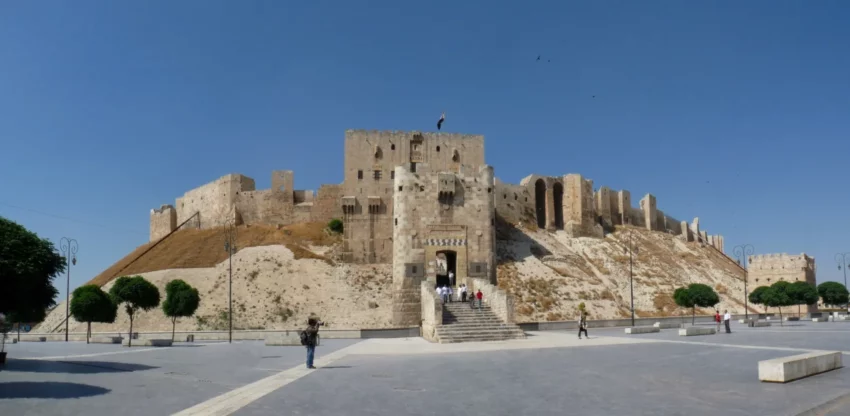The Citadel of Aleppo: A Historical Overview
The Citadel of Aleppo, a monumental site in northern Syria, stands as one of the oldest and largest castles globally. Its strategic location in the center of the old city of Aleppo underscores its historical significance. The Citadel’s hill has seen continuous use since the middle of the 3rd millennium BC. Over the centuries, it has been occupied by various civilizations, including the Greeks, Armenians, Romans, Byzantines, Ayyubids, Mamluks, and Ottomans. The structure that we see today primarily dates back to the Ayyubid period.
Get your dose of History via Email
Architectural and Historical Significance
The Citadel of Aleppo is not just a fort; it’s a palatial complex that has evolved through various historical phases. Each civilization that occupied the Citadel left its mark, contributing to its rich architectural diversity. The majority of the existing structures were built during the Ayyubid period, with significant additions by the Mamluks and later by the Ottomans. The site includes palaces, mosques, baths, and a vast array of defensive structures, all encircled by a deep moat that dates back to the 12th century.
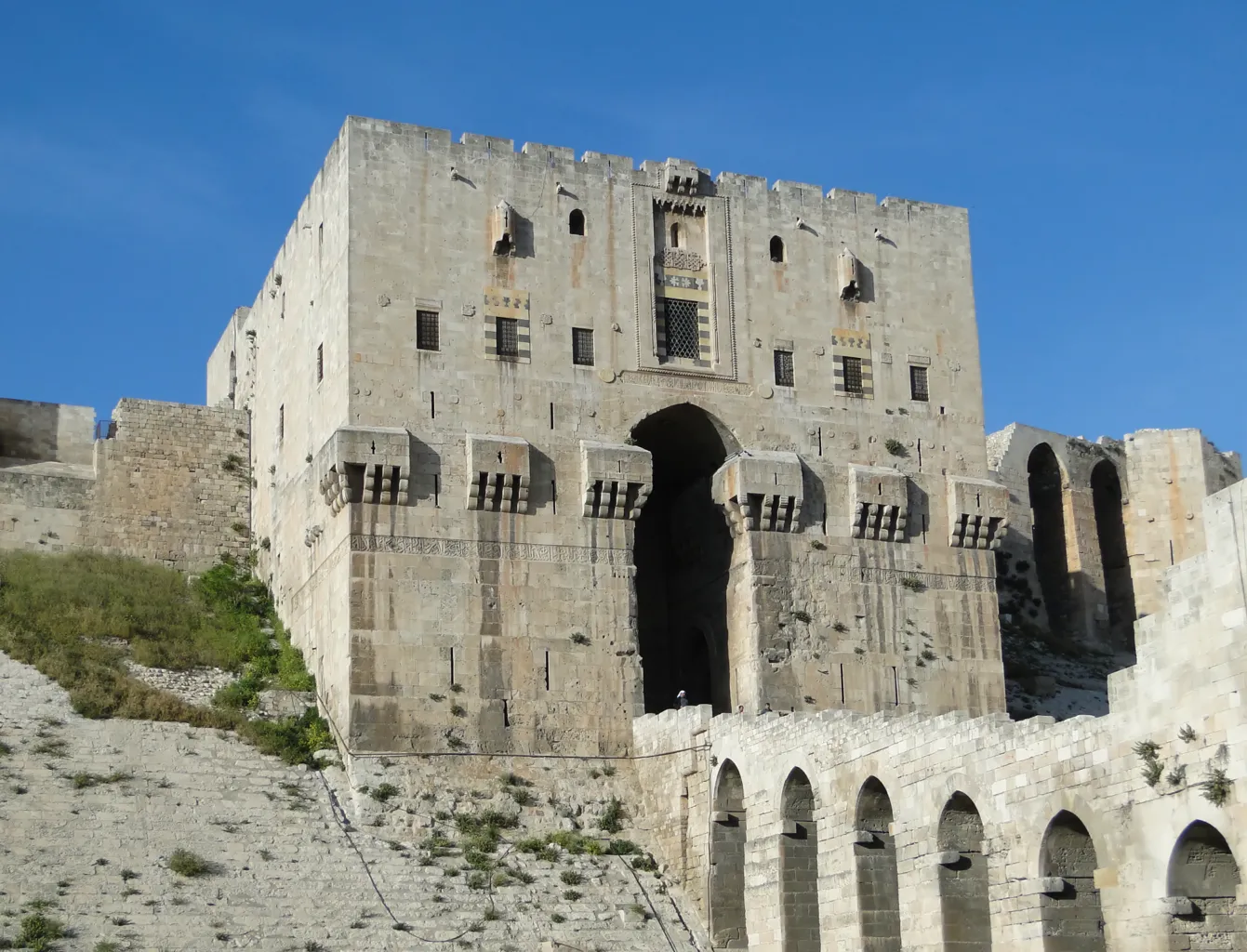
The Role of the Citadel Through Ages
Initially, the Citadel served as a military stronghold and a royal residence. During the Crusades, it was a critical defensive position for Muslim leaders against European crusaders. The Citadel’s strategic importance continued through the Mamluk period when it underwent substantial fortification enhancements. In the Ottoman era, its role transitioned more towards a garrison fort, reflecting the changing military needs of the time.
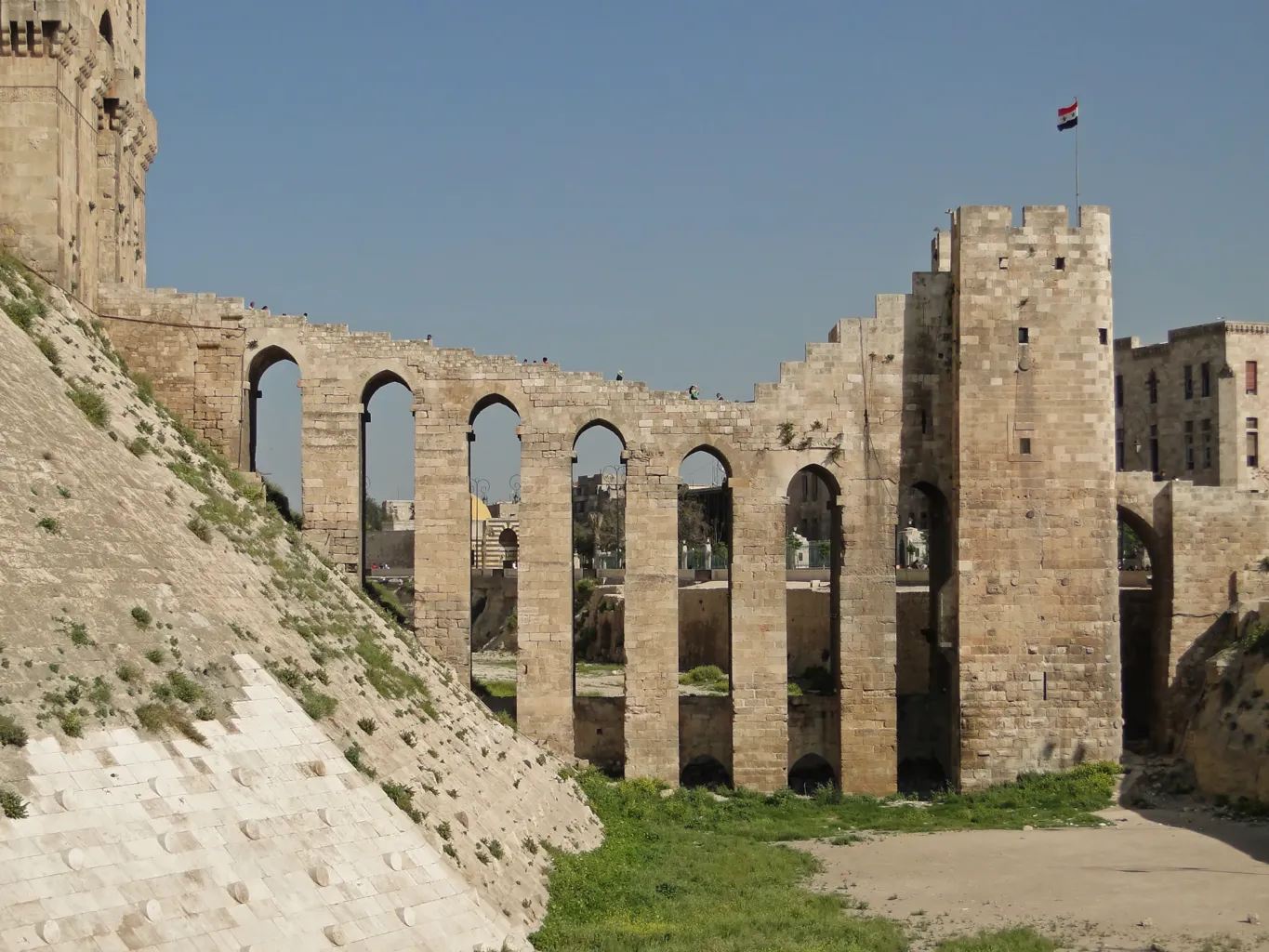
Conservation Efforts and Challenges
The Citadel of Aleppo has faced numerous challenges, including significant damage during the Syrian Civil War and the recent 2023 Turkey-Syria earthquake. Despite these setbacks, restoration efforts have been ongoing. The Aga Khan Trust for Culture, in collaboration with the Aleppo Archaeological Society, undertook extensive conservation work in the early 2000s. These efforts aim not only to repair damage but also to preserve the Citadel as a symbol of Aleppo’s rich historical and cultural heritage.
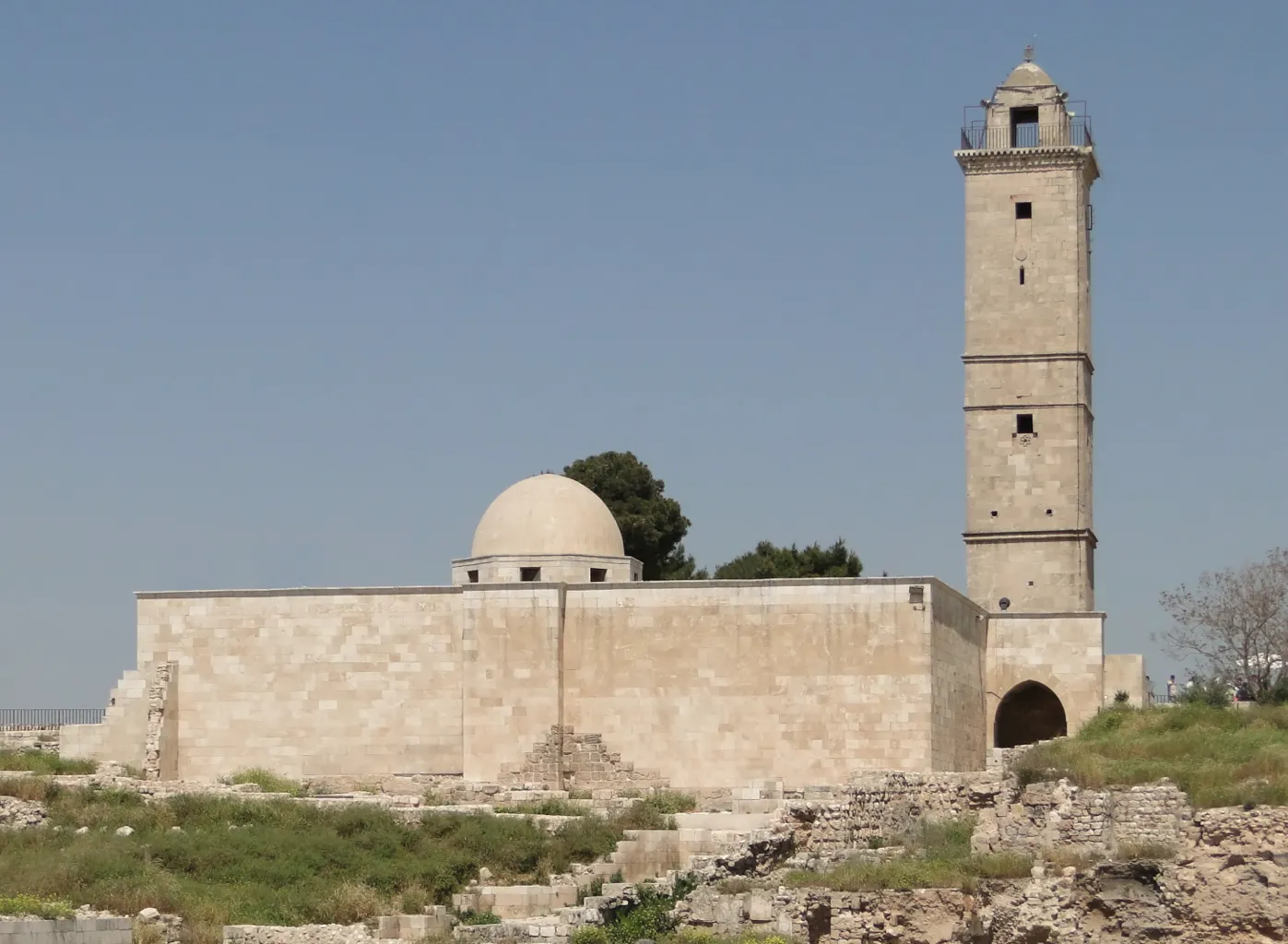
The Citadel as a Cultural Hub
Before the Syrian civil war, the Citadel was a vibrant cultural hub, attracting tourists from around the world. Its amphitheater hosted various cultural events and concerts, celebrating Aleppo’s diverse cultural heritage. Today, efforts to revive these cultural activities continue, with the Citadel playing a central role in Aleppo’s cultural renaissance.
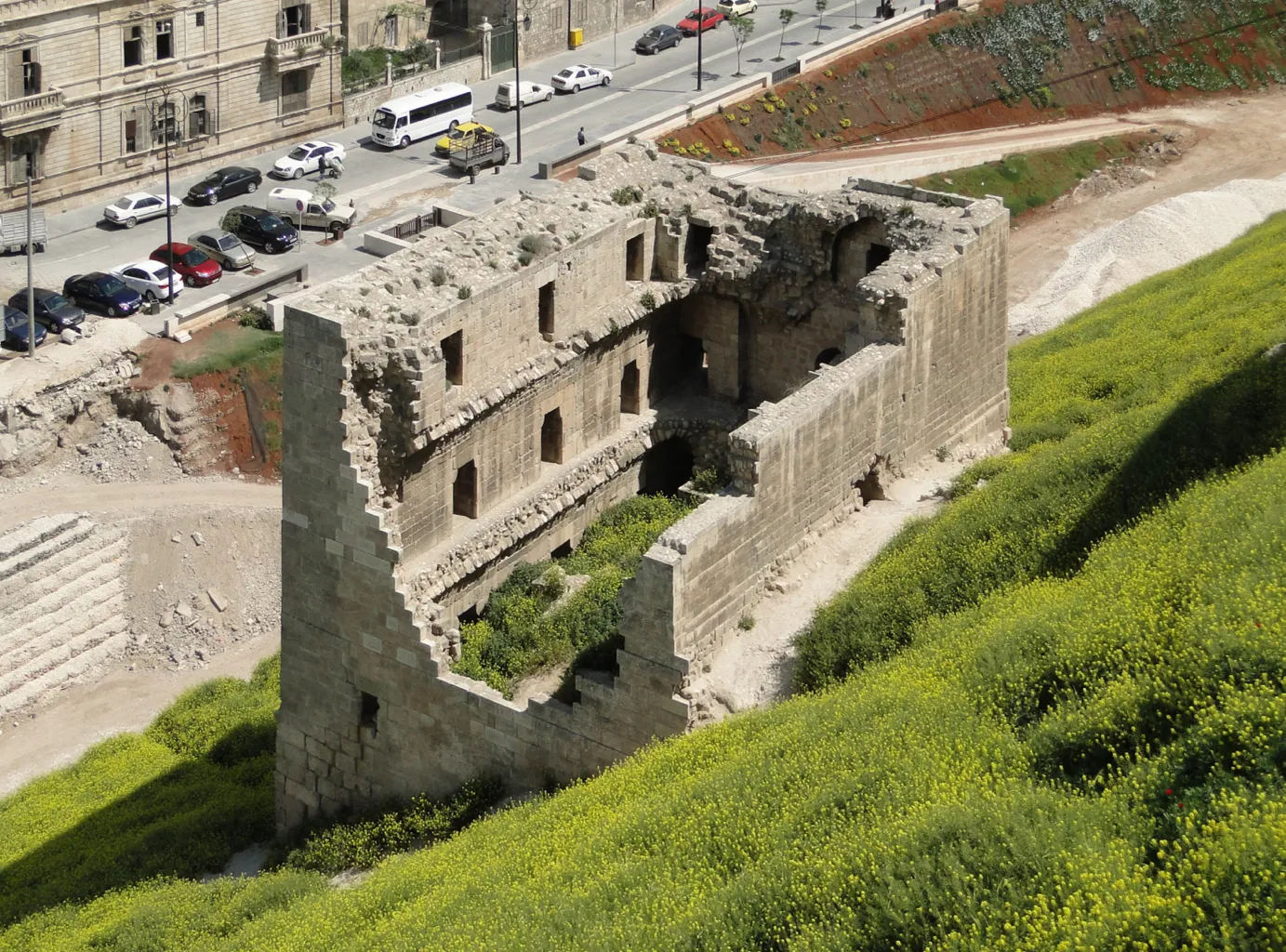
Conclusion
The Citadel of Aleppo is more than just an ancient structure; it is a testament to the city’s resilience and enduring spirit. Its walls tell stories of ancient civilizations, wars, and empires that have shaped the history of this region. As restoration efforts continue, the Citadel of Aleppo remains a beacon of hope and a symbol of Syria’s rich cultural legacy, promising to once again stand as a pillar of cultural and historical pride for Aleppo and the world.
Sources:

